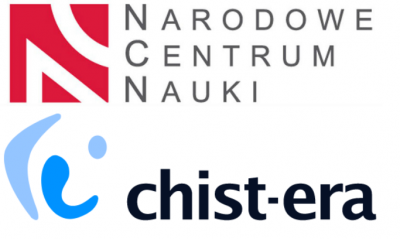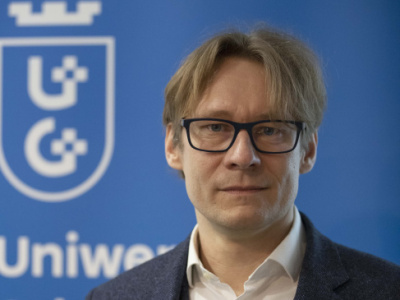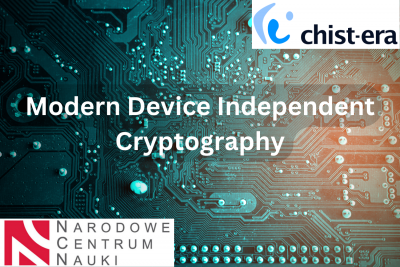
More than PLN 2.3 million went to the International Centre for Theory Of Quantum Technologies UG from a contest co-organised by the National Centre for Science and the CHIST-ERA network for the MoDIC (Modern Device Independent Cryptography) project. The research team led by dr hab. Marcin Pawlowski, prof. UG is working on creating digital security that is device-independent.
Quantum cryptography is known for the high level of robustness of the security offered but is unfortunately vulnerable to attacks at the system design level. This is where the differences between theory and practice arise, which can potentially be exploited by hackers.
Device-independent quantum cryptography, to be developed under the MoDIC programme, is the answer to these challenges. In its case, it does not matter how the hardware works, as the probability distribution alone is the relevant factor. This revolutionary approach eliminates vulnerabilities due to physical defects and introduces security certainty.

prof. Marcin Pawłowski. photo Mateusz Byczkowski
‘Quantum cryptography offers the highest level of security but is also very expensive. Therefore, it is unlikely to find application in our homes, at least for the next few years, until the price comes down,’ explains prof. Marcin Pawłowski. ‘On the other hand, it is well suited for industries where security is crucial, and price plays a secondary role. At the moment, quantum solutions are mainly used by the military and banks, and quantum random number generators (as the simplest of quantum devices) are also used by lotteries. The first mobile phones with these generators are also appearing.’
Although experiments with device-independent cryptography have so far been slower and limited in scope, the project's aim is clear: to improve the theoretical basis of quantum cryptography to make it a practical solution. The project team's work focuses on new non-classicality tests, which are the foundation of the field. Researchers want to improve security proofs and are experimenting with new approaches.
‘Cryptology, the science of securing information, is divided into cryptography, the science of creating cyphers, and cryptanalysis, the science of breaking them. Quantum technologies are useful in both parts. In the former, we build devices already available on the market and used in practice,' said prof. Marcin Pawłowski. ‘Quantum computers, on the other hand, are suitable for cryptanalysis. To break current encryption standards, we need a quantum computer with 4097 qubits, which works almost perfectly. Unfortunately, current computers not only have too few qubits, but also generate a great many errors, and it is these errors, rather than the number of qubits, that are the main problem standing in the way of their development.’
Noteworthy quantum computers include China's Zuchongzhi 2 with 66 cubits, IBM's 433-cubit computer and Google's Sycamore processor with 54 cubits.

‘It is difficult to say when we will have a CRQC (cryptographically relevant quantum computer), a quantum computer that could mess with cryptography. It is estimated that in about five to 10 years. But when such a computer is developed, it will also be able to read encrypted conversations conducted in the past,’ explains prof. Marcin Pawłowski. ‘Intelligence services currently intercept all communications they can and store them to be read in the future. Therefore, it is necessary to change how information is secured now, and work in this direction is being advanced worldwide. So, although quantum computers do not exist, the very threat of their existence in the future forces changes in cryptography today.’
A team from ICTQT will be working on these changes thanks to a PLN 2 360 090 grant from the CHIST-ERA Call 2022 contest, co-organised by the National Science Centre (NCN) and the CHIST-ERA network.
‘Market analyses suggest that the use of quantum technologies in automotive will increase significantly in the coming years, and a little later, the biggest demand will come from the Internet of Things sector,’ the project manager announces.
